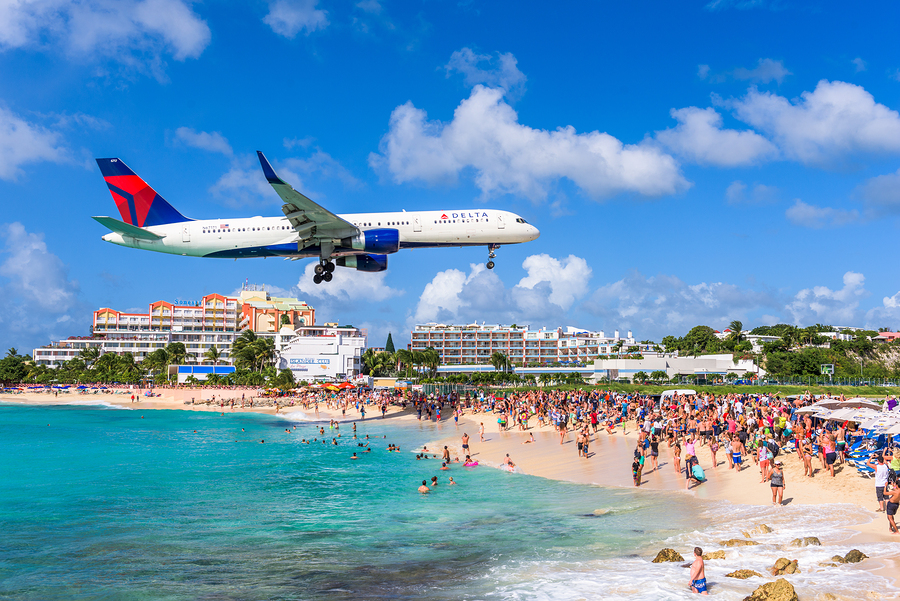There are some airports around the world that require an uncommon degree of composure on the part of the pilots. Between landings in the globe’s highest mountain ranges and those just a few metres from a beach or facing a cliff, there are big challenges for those who have our lives in their hands. So if you have an adventurous spirit, this article is for you.
Constraints of the surface
The first constraint is probably not the one you are thinking about. It is linguistic. In fact tarmac (tar plus MacAdam), a trademark filed at the beginning of the twentieth century, does not refer to the landing strip but rather the parking area for aircraft, also called the “apron”. So “landing on the tarmac” is an abuse of language, and our dear pilots will rather land on a runway which, for the greatest fear of all, is not always made of asphalt. Indeed, would you really be serene with landing on the Ice Runway in Antartica, or on a beach only accessible at low tide, delimited by simple wooden posts (Barra in Scotland)? And if you want to see the sea even closer, head to the airport of Funchal on Madeira Island which, since 2000, encroaches on the water with its 180 columns – an assured spectacle!
Heights to make passengers and locals pale
Between high altitude landings and those at very low altitude, there are some heart-stopping experiences in store. You will have to have a lot of trust in your pilots when landing at the Tenzig-Hillary Airport in Nepal – named after the first two men to have reached the roof of the world in 1953 – on a runway with a 12% grade at 2800 metres altitude. The pinnacle seems to be Paro, the only airport in Bhutan, which has a runway surrounded by mountains reaching close to 5500 metres high and for which only eight pilots in the world are certified to carry out this manoeuvre! It is up to you to judge whether an approach just above a beach (Princess Julianna in St. Maarten in the Netherlands Antilles) or over a ridge of houses (Congonhas Airport in Sao Paulo, Brazil) is safer. While continuing to push the limits, why not land right on a road which crosses the main street of a town and for which aircraft-car traffic is managed by a simple level crossing, as in Gibralter?
Runways paved with pitfalls
Aside from the runway surface and altitude, other difficulties can await the pilot at the turn… in the proper sense of course: 45-degree turns at the Toncontin Airport in Honduras to avoid hills and trees surrounding the short runway located in a basin, or 47-degree turns at the Kai Tak Airport in Hong Kong where the pilot must also deal with crosswinds and hills. Some runways have many surprises in store when we get to the last few metres: cliffs – no less – at the Matekane Airport in Lesotho and and Juancho E. Yrausquin in the Carribbean, or a precipice, such as Courchevel Airport in France. Given all these dangers, short runways – even very short ones such as some in Idaho (122 metres) and Montana (152 metres) – should not be enough to make you panic.
Some landings alone bring a real dose of adrenalin on their own, and more than one passenger may decide to choose (or refuse) their destination based on the characteristics of the runway. A little complication to manage for family vacations…
